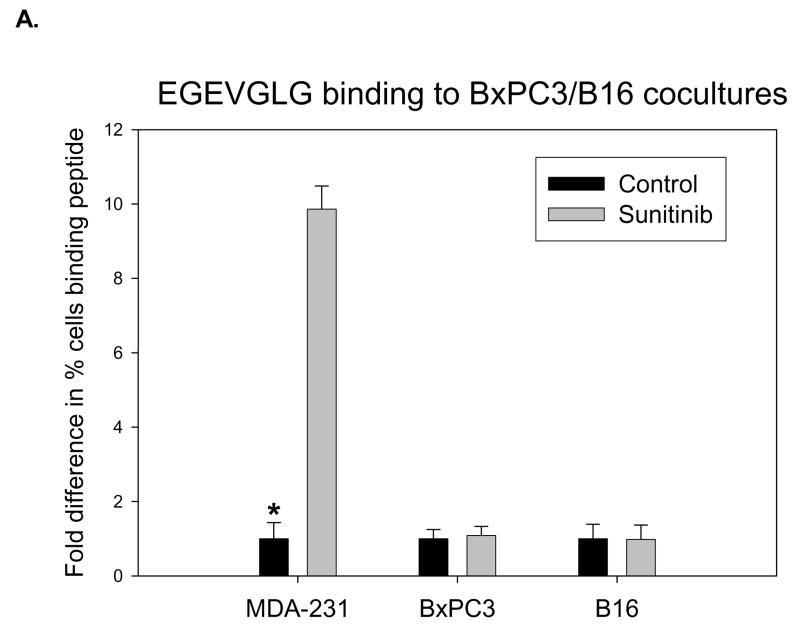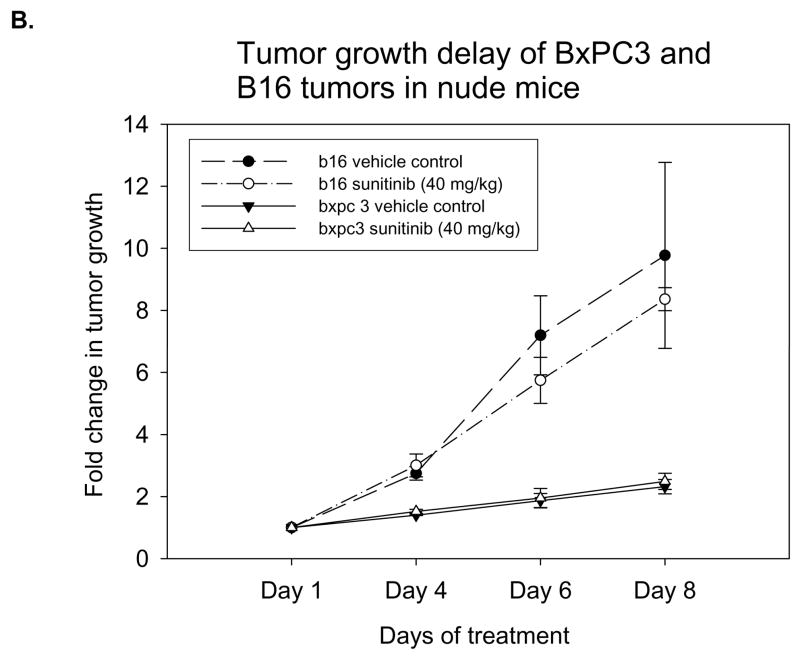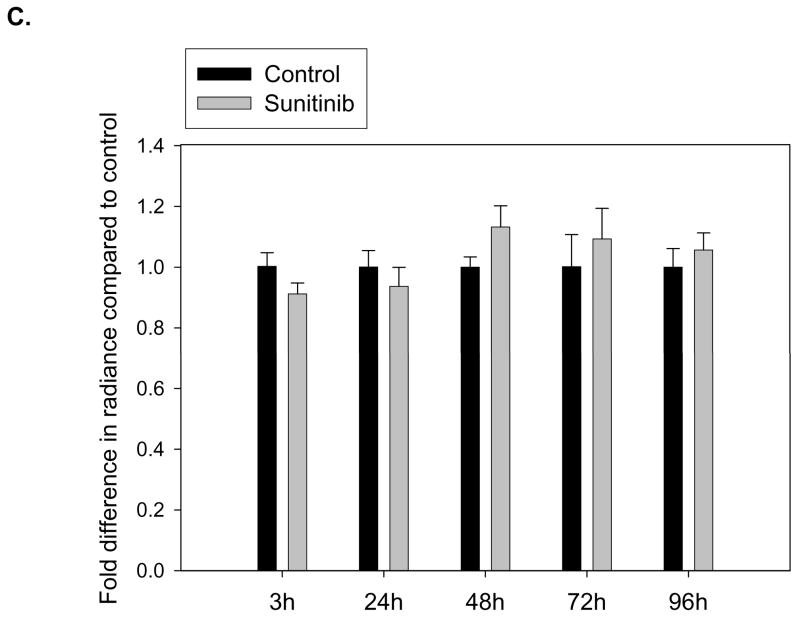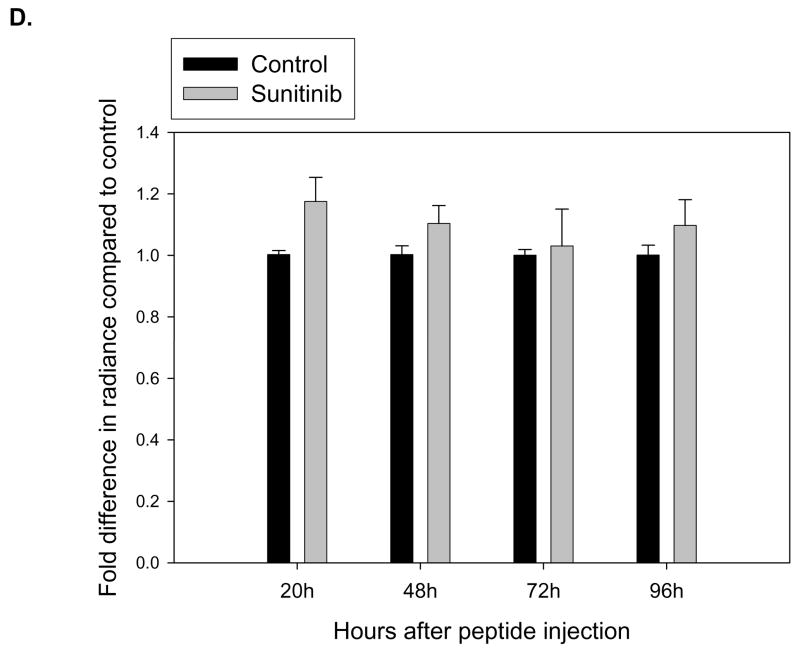Fig. 5.
EGEVGLG peptide does not exhibit increased binding to tumors that do not respond to sunitinib therapy. A, HUVECs were co-cultured with MDA-MB-231, B16, or BxPC3 cells to simulate tumor vasculature. After treatment with 0.5 ug/mL sunitinib for 1 hour, incubation with fluorescently labeled EGEVGLG peptide for another hour, HUVECs were imaged for binding of peptide (*P < 0.05). B, Shown is tumor growth delay study of B16 melanoma and BxPC3 pancreatic tumor cells. The tumors were implanted in the hind limbs of nude mice (n=3 per group) and given once daily treatments of sunitinib at 40 mg/kg or a vehicle control for five consecutive days. C, D Peptide-dye complexes were injected 4 hours after the fifth day of treatment and no preferential binding of the peptide was observed between sunitininb-treated and untreated groups in C B16 or D BxC3 tumors.




